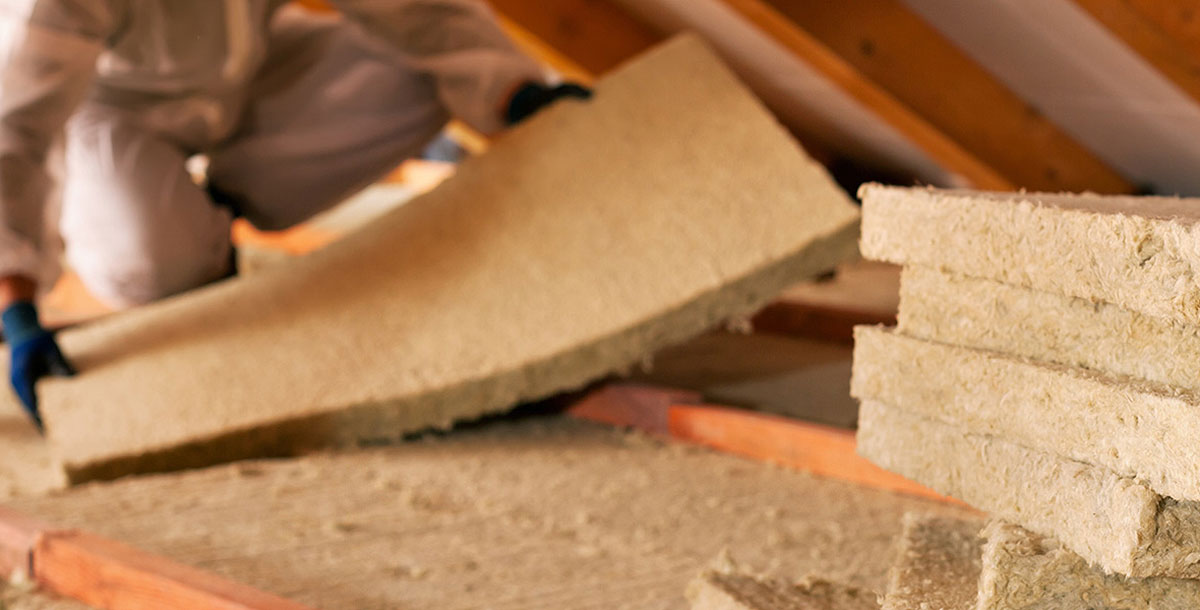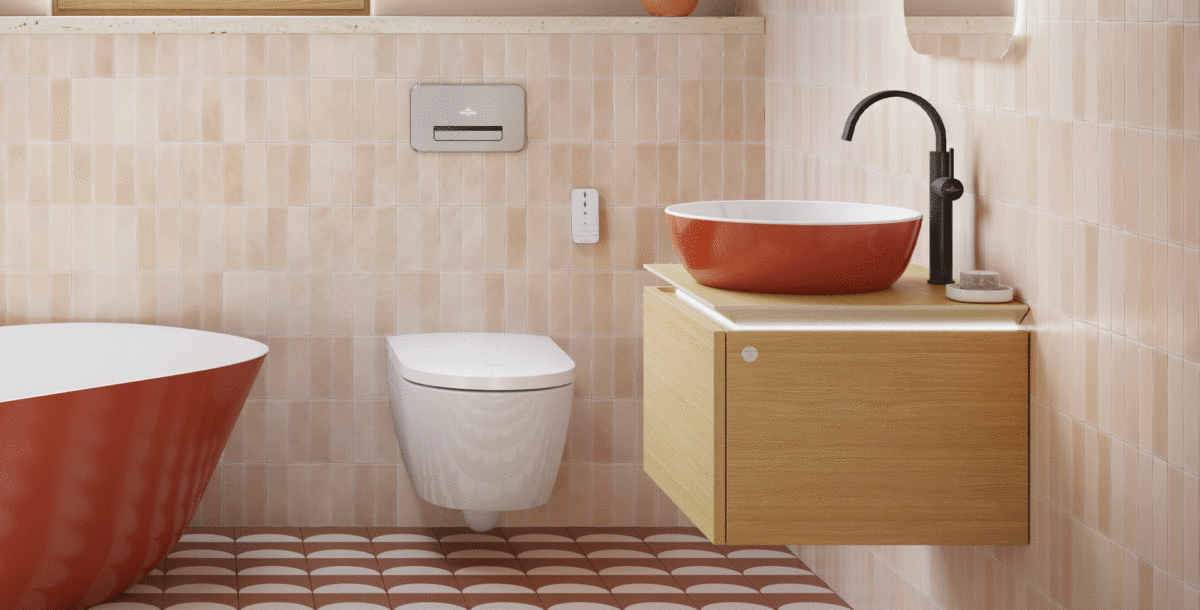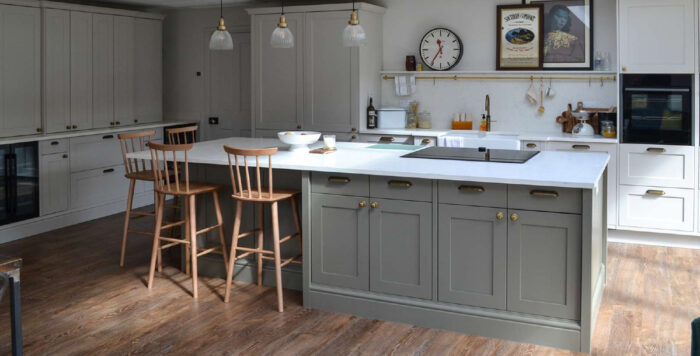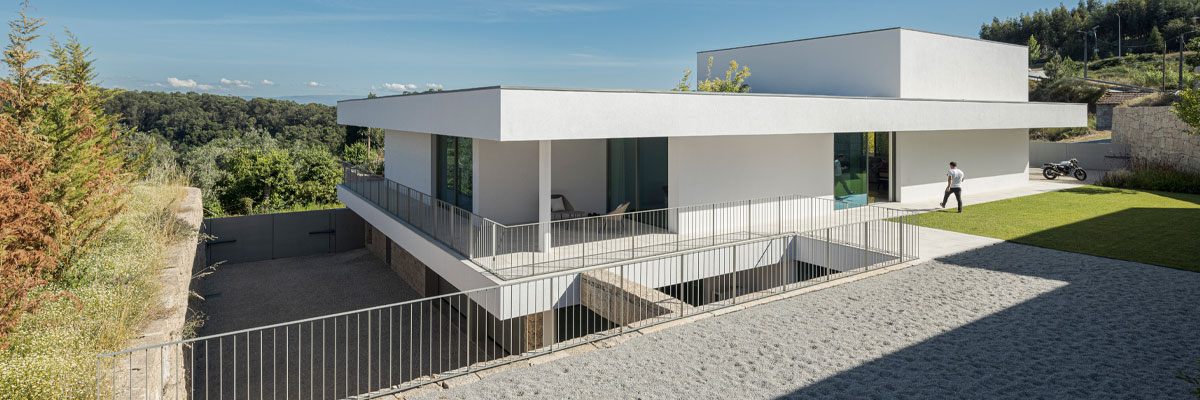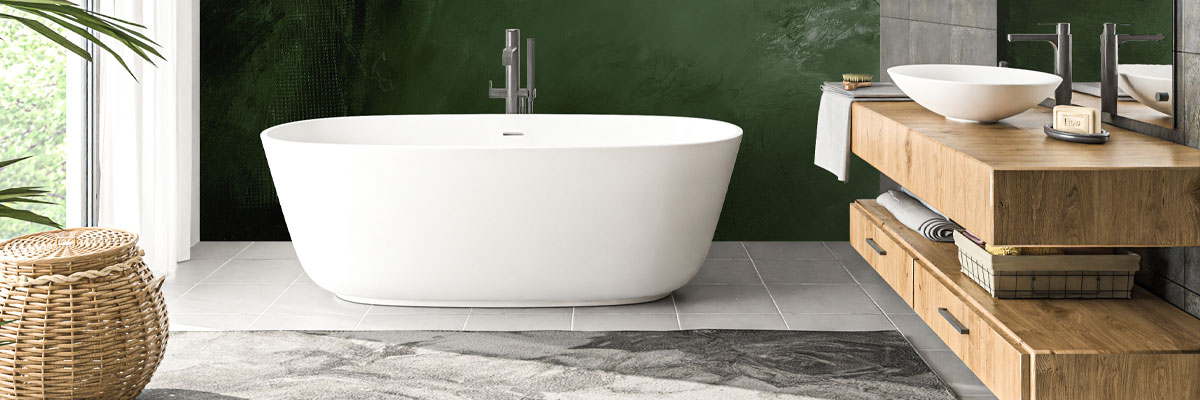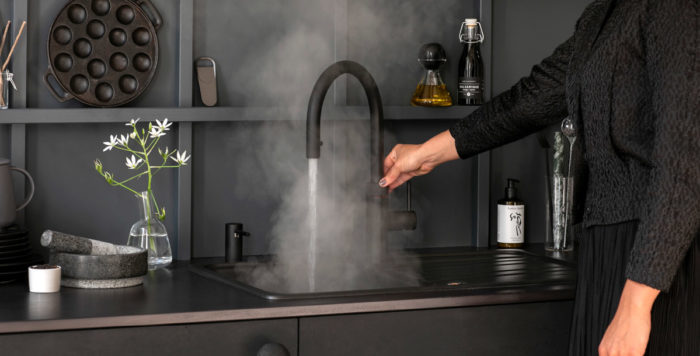How to make your heating more efficient and reduce energy bills
Energy prices are at record highs, but don't panic we've got some great ways to cut your heating bill
As the price cap has just gone up, and the temperatures look set to plummet, heating our homes is about to get more expensive. Making your heating run more efficiently will not only make your home feel warmer, it will reduce your heating bills, regardless of whether you’ve got a new heat pump or you’re running an older gas boiler. Here are the steps you can take.
Bleed your radiators
Stephen Day, from online boiler installation company iHeat, says, “One of the easiest ways to make your home warmer and cut down on your heating bills is to bleed your radiators. This is when you release air that may have become trapped in your heating system, causing them to work less efficiently. By releasing the air you not only increase the amount of heat in each room, but you’ll save money as you won’t need to have the heating on for as long to be effective.”
Service your boiler
Jonathan Daines, of online lettings platform lettingaproperty.com, says, “Paying for a boiler service can help save money over the winter. It ensures that boilers are operating efficiently and safely, minimising energy consumption. A service will also help prevent issues as the weather turns colder, avoiding costly callouts.”
Adjust your boiler flow temp
Stephen Day continues, “Adjusting your boiler’s flow temperature can also be a game-changer for your heating bill, because many boilers are set higher than necessary. By lowering the flow temperature by a few degrees you can still stay warm while reducing your energy consumption. This is especially true in small homes or flats which can overheat very quickly.”
The flow temperature is the temperature at which the boiler sends hot water out into the radiators in the house. This is a job you can do yourself: the Heating Hub has detailed instructions here explaining how to reduce flow temperature. But, if the instructions make your head spin, you can ask a heating engineer to do it next time you have your boiler serviced. It’s worth doing because you could save as much as 9% from your gas bill.
Traditionally, boilers were set to high temperatures, such as 80°C. This takes a considerable amount of energy to get the boiler to this temperature, and it’s more efficient to use a lower temperature for longer. That’s particularly true with condensing boilers, which need to run at around 65°C or lower in order to go into condensing mode, which captures waste heat and improves efficiency. Keep nudging your flow temperature down 5°C and see if the house is still comfortable. The saving from making the change could be about 6-8%.
It’s really important to note, though, that, if you have a traditional boiler with a hot water tank, the temperature of your hot water system shouldn’t be any less than 65˚C otherwise there is a risk of legionella bacteria – which cause Legionnaires’ disease – growing in the tank and getting into your hot water supply.
Fit a weather compensation controller
Weather compensation controllers are gadgets that use sensors to take the temperature outdoors and indoors and adjust your heating system accordingly. It’s a great way to automate your heating and make it more responsive to the weather. And as a bonus, you could save as much as 15% off your heating bill. That’s a best-case scenario, and a whole range of factors means you might not get such good results. They are best suited to households where someone is at home all day so there is a need to keep a consistent temperature in the house all day long. You’ll need to get a heating engineer to fit one. But it’s an expensive bit of kit and, if you have a smart thermostat, it might already be doing the job.
The Heat Geeks video below will help you understand why weather compensation is important, and what kind of compensation is the best.
Get a smart thermostat
A smart thermostat connects your heating system to the internet so that you can control it remotely via an app. Smart thermostats cost between £100 and £250 plus installation. Different brands have different functions, but many have additional cost and efficiency saving routines built in, such as the ability to turn off the heating when you go out, or adjusting target temperatures based on the local weather.
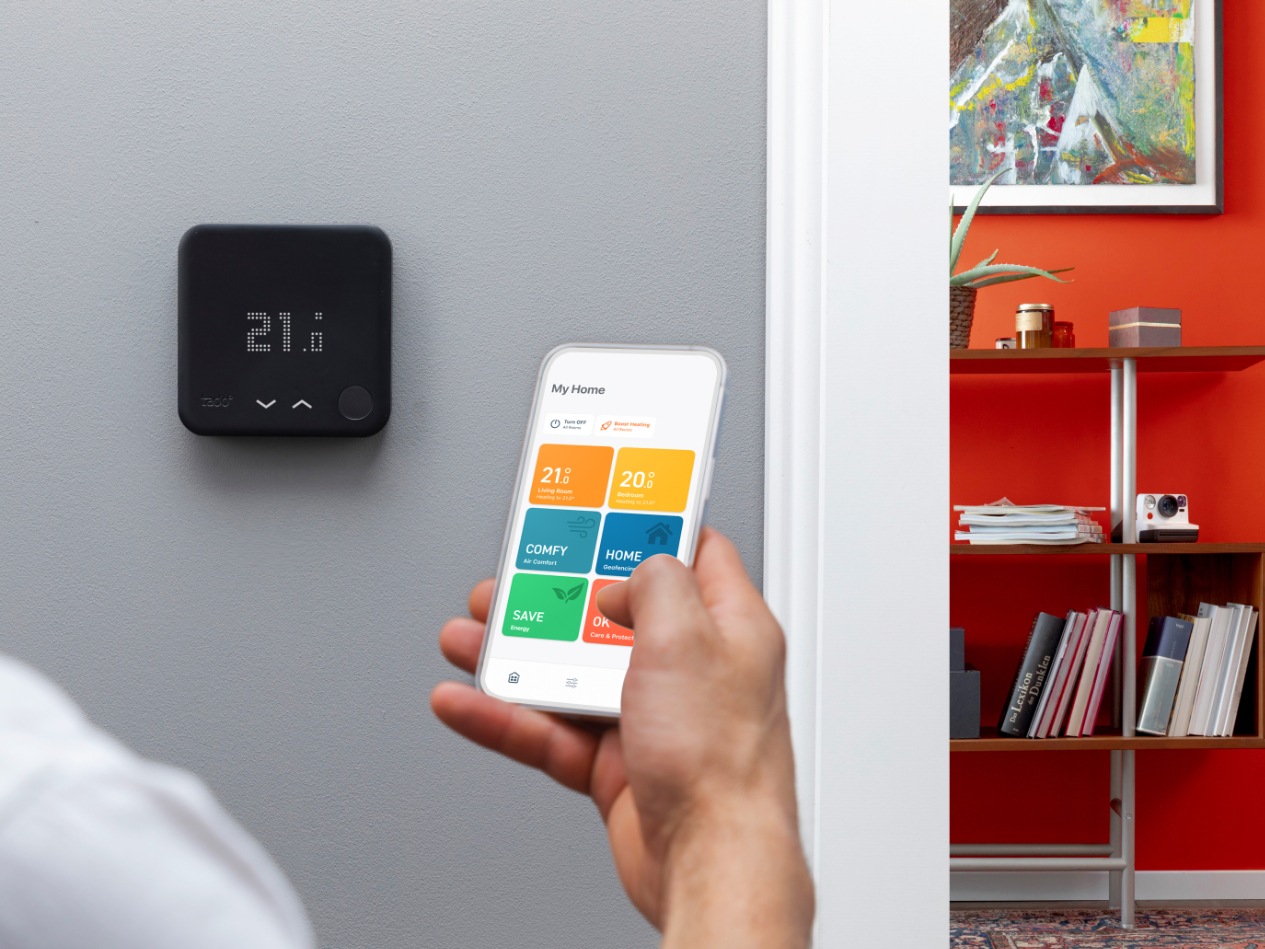
Get the right size boiler or heat pump
Some heating engineers install boilers that are too big on the ‘bigger’s gotta be better, right?’ principle. So, for example, a small terraced house with double glazing and loft insulation might only need a 6-8kW boiler but will often have a 15-24kW boiler installed. This can lead to the oversized boiler cycling on and off, not reaching condensing mode, burning more fuel, increasing your carbon footprint and accelerating wear and tear. The same applies to heat pump installations, and you need the size suited to your home.
To deal with this, adjust the boiler’s output using the range rating function. You will need to look at the manual to do this. And you might have to crank up the output again on the odd very cold day. There’s more info from the Heat Geeks on the subject here.
Turn down your hot water temp
As Heat Geeks also point out, most combi boilers come with hot water preset to 50°C, but, if you have a dishwasher, you’re probably not going to need water that hot. Similarly, most of us take showers at about 40˚C. So, again, no need to heat the hot water to 50˚C. So turn it down. This is a tip that applies to newer, combi boilers only; if you have a hot water tank, you need to keep the water at 65°C or above.
Turn down your thermostat
The simple one: turning down your thermostat by one degree can save 5% off your bill.
Thick curtains
Thick curtains with a lining will help keep the heat in and stop it escaping through the windows. Shut them as soon as it gets dark. And, talking of curtains, make sure yours don’t funnel the heat from any below-window radiators straight out through your windows.

Image credit: Pexels Nataliya Vaitkevich
11 Draught-proof your windows
You can use sticky foam strips to seal any gaps in your windows cheaply and easily. These might not last very long, but they work well enough in the short term. For sash windows, you can get more expensive metal or plastic strips with brushes.
If you have the money to do it, replacing single-glazed sash windows with double-glazed windows can be a good investment in terms of your thermal insulation. Glass technology has improved so much, and double-glazing can be very thin these days. So, if you’ve got a period property, you won’t be able to tell the difference visually, but the thermal insulation will be significantly better. Secondary glazing – new completely separate glazing units put inside the windows – is another option if you don’t want to change the external appearance of your house. But both options are really costly.
12 Insulating window film
Whether your windows are double or single glazed, you can add a layer of window film for extra insulation. Make sure you get the kind designed for insulation. Kits cost about £20 for 1.5 x 10m. Watch the ‘how to’ video below first to see if it’s something you could face doing: it’s a bit of a faff. But most people who install it report good results.
Repair your windows
Jonathan Daines also recommends recaulking the inside and outside of windows as a good way to prevent air leaks and draughts.
Draught excluders
Go old school with a sausage dog or snake-shaped draught excluder for the bottom of your exterior door. Or you can get a whole range of specific purpose-made draught excluders to fit different parts of exterior doors: the bottom, keyhole and letterbox.
Install chimney draught excluders
Stop heat escaping up your chimney with a chimney draught excluder. There are two main types: ones made from breathable natural materials, such as the Chimneysheep, or inflatable-cushion-type ones like the Chimney Balloon.
Draught-proof the floor
You can fill the cracks between floorboards with a purpose-made filler, just make sure you use a flexible filler, decorator’s caulk or mastic-type product that will allow for movement in the boards.
Insulate your floor
You can take it a stage further an insulate the floor. In modern houses, the floor is likely to be concrete and you can put a layer of rigid foamboard insulation on top. But you’re going to have to take up all your floor coverings to do this, and it’s an expensive job. So probably only worth doing if the floor needs replacing for some reason.
Suspended timber floors in older homes can be insulated with mineral wool insulation held up in netting between the joists. The Energy Saving Trust reckons it could save you £75 to £125 a year. But it’s an expensive job as it involves taking up all the floorboards. So perhaps this is only worth doing from an economic point of view if you can access the underside of the floor via a cellar, or if you have the skills and time to do it yourself? As an alternative, you can now get a robot to apply spray foam under your floorboards without the need to lift them.
Insulate your hot-water cylinder
If you have a hot-water cylinder, insulating it properly (the insulation jacket should be 80mm thick) can save you as much as £45 a year, according to the Energy Saving Trust. You can even use old blankets and duvets to do the job. Make sure the pipes are lagged too.
Install radiator reflector foil
The Energy Saving Trust believes radiator reflector foil is worth fitting, to reflect heat from radiators into the home, saving money – and CO2. The silver reflector goes behind each radiator, but remember you only put it on those radiators that are on external walls. It works particularly well on uninsulated walls. You can get rigid sheets and sheets that hang behind the radiator on little clips, which are both easier to install than the sheets that you have to stick to the wall.
Use radiator fans
Radiator fans clip to the top of your radiators or stick to the bottom, and use electrically-powered fans that are cheap to run to increase airflow through the radiator and better distribute heat in a room, reducing cold spots and making a room feel more comfortable. Some models need to be turned on and off manually; others use a temperature sensor and turn on automatically as a radiator heats up.
Install a heat pump
A heat pump could make financial sense and help you cut your heating bills, particularly if your old boiler needs replacing anyway. You can get a grant of up to £7500 towards installation costs from the Boiler Upgrade Scheme.
Get cavity-wall insulation
Most households will benefit from reduced bills if they increase their insulation. Of course, there will be an upfront cost, but there could be a grant available (see above) and the savings can be significant. The cost-benefit calculation for each type of insulation will depend on your property. But one sort that is very likely to pay off, if you haven’t already got it, is cavity-wall insulation.
If your home has an energy performance certificate, that will tell you what insulation is already installed. Otherwise, you should be able to tell whether your house has cavity or solid walls by looking at the brickwork. On solid walls, the bricks are generally laid alternately end (header) and side (stretcher) on in a pattern called Flemish bond. In cavity walls, they are all side (stretcher) on in a pattern called stretcher bond. Failing that, you can measure the wall at a door or window: if the wall is more than 26cm, your house likely has cavity walls. If its narrower, likely solid walls.
Installation costs are generally between £1,000 and £3,000 and it is reckoned to remain effective for about 40 years, meaning potential total savings of up to £12,600. You could get help with the cost from the Great British Insulation Scheme.
Loft insulation
The other insulation big saver is loft insulation. According to the government, if you have no loft insulation, adding the recommended 300mm thickness could save you up to £270 a year. Or, if you already have some insulation, boosting it to 300mm could save you up to £32 a year.
Installation costs are generally between £400 and £1,200 and the measure could last up to 42 years, meaning potential total savings of up to £11,340. Plus, again, you might be able to get help towards the cost from the Great British Insulation Scheme.
Turn the heating off
There’s an old myth that it’s better to keep your heating on all day, as it’s cheaper to ‘top up’ the heat than to reheat from scratch. This isn’t the case and you’re wasting energy doing this, particularly when you’re out. It’s more efficient and cheaper to heat your home when you need it, turning off your heating when you go out. That said, to prevent condensation you’ll likely want a minimum temperature of 12°C to 14°C set in your home. Getting a smart thermostat is the best way to achieve this, as you can set a minimum temperature when you’re out to prevent issues but warm your house when you’re at home.
You can also use thermostatic radiator valves (TRVs) to control the temperature of a room, limiting how hot a radiator gets. This is useful for climate control, but also shuts down radiators when a room is at the right temperature. When a radiator valve is closed, water is no longer pumped through it, which means that less water has to be heated in total, which reduces running costs.
You can turn off radiators in rooms you’re not using to save money, but make sure the door is shut to keep the warm air in the main part of your home. And, be careful about letting a room get too cold. For ultimate control, smart TRVs give you full flexibility, allowing you to control the temperature of your house on a room-by-room basis; these smart TRVs are expensive to install, so take that into account.


